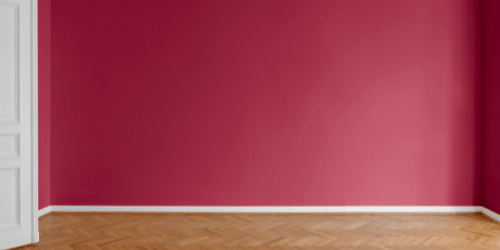Paint primers play a crucial role in achieving successful painting results. Whether you’re working on interior or exterior surfaces, selecting the appropriate primer can significantly impact the final finish, durability, and overall performance of your project. In this blog post, we’ll explore key considerations for choosing the best paint primer and provide expert advice for various scenarios.
Before diving into the details, remember that priming isn’t always necessary for every project. Self-priming paints are available, but there are situations where using a dedicated primer is essential. Let’s explore those scenarios.
When to Use Primer
Bare Substrates
If you’re dealing with surfaces that haven’t been previously painted or coated, using a primer is crucial. Primer helps to create a smooth and even base, ensuring better adhesion of the paint or coating. It seals the surface, preventing stains, moisture, and other contaminants from seeping through, which can affect the quality and longevity of the final finish. Primer also helps to enhance the durability and appearance of the topcoat by providing a uniform surface that promotes consistent color and texture. This step is especially important for porous, uneven, or highly absorbent surfaces, as it prepares them for the topcoat, resulting in a more professional, long-lasting, and aesthetically pleasing outcome.
Bare PVC or Composite Material
These materials benefit from proper priming to enhance adhesion. Applying primer ensures that the paint or coating bonds effectively to the surface, reducing the likelihood of peeling or chipping over time. Proper priming creates a stable foundation that supports the topcoat, leading to a more durable and resilient finish. This step is essential for achieving a high-quality, long-lasting result, particularly on surfaces that are challenging or have never been treated before. By priming correctly, you can improve the overall performance and appearance of your paint job, ensuring a professional and polished look.
Sanded Surfaces
When you’ve sanded down a surface due to damage, applying a primer ensures better coverage and adhesion of the topcoat. Sanding can leave the surface uneven and porous, making it difficult for paint to adhere properly. A primer helps to fill in these imperfections, creating a smooth and uniform base. This not only improves the coverage of the paint but also enhances its durability, preventing issues like peeling and chipping. Using a primer after sanding ensures that the final finish is even and professional-looking, effectively concealing any previous damage and providing a long-lasting, high-quality result.
Acrylic vs Alkyd (Oil-Based) Primers
Acrylic Primers
Primers often allow for easier application and water clean-up, making the painting process more convenient and efficient. Suitable for most surfaces, including wood, laminate, and metal, primers provide excellent adhesion and coverage, creating a smooth and uniform base for the topcoat. This ensures a professional, durable finish, reducing the likelihood of peeling, chipping, or uneven color. However, while general-purpose primers work well on many surfaces, they may not be effective on rusted areas, where a rust-inhibiting primer would be necessary. Using the appropriate primer simplifies your painting project and enhances the quality and longevity of the final finish.
Alkyd (Oil-Based) Primers
Primers offer superior stain blocking, making them ideal for tannin-rich woods, rust, smoke, or water stains. These primers effectively prevent stains from bleeding through the topcoat, ensuring a clean and uniform finish. They work well on both interior and exterior bare wood substrates, providing a reliable solution for various staining issues. Using a high-quality primer addresses challenging stains and creates a smooth surface that enhances the appearance and durability of the topcoat. Whether you are working on an indoor or outdoor project, a good primer is essential for achieving professional results and long-lasting performance on bare wood surfaces.
Rust or Stains
Primers effectively block rust and stains, providing a clean and uniform base for your topcoat. They prevent unsightly blemishes from bleeding through the final paint layer, ensuring a smooth and professional finish. By sealing and covering rust and stains, primers enhance the durability and appearance of the topcoat, contributing to a longer-lasting and aesthetically pleasing result. Using a primer is crucial for achieving a flawless finish, particularly on surfaces prone to discoloration or corrosion.
Applying Primer Correctly
Surface Preparation
Ensure the surface is clean and dry before applying primer. This preparation step is crucial for achieving optimal adhesion and a smooth finish. Remove any loose paint, dirt, and debris to create a stable base for the primer. Properly cleaning the surface helps the primer to bond effectively, preventing future peeling or chipping of the topcoat. Taking the time to prepare the surface thoroughly ensures that the primer can do its job effectively, leading to a more professional and long-lasting paint job. This attention to detail in the preparation phase is essential for achieving the best results in any painting project.
Even Application
Apply the primer evenly using a brush, roller, or sprayer to ensure a smooth and uniform base for your paint. It’s crucial to follow the manufacturer’s instructions for drying time to achieve the best results. Proper application ensures that the primer bonds effectively to the surface, providing a solid foundation for the topcoat. Adhering to recommended drying times is essential, as it allows the primer to cure fully, enhancing the durability and appearance of the paint. By taking the time to apply the primer correctly and allowing it to dry as specified, you ensure a professional, long-lasting finish for your painting project. This meticulous approach contributes to the overall success and longevity of your paint job.
Topcoat Timing
Allow the primer to dry completely before applying the finish coat to ensure optimal adhesion and a flawless final appearance. Rushing this process can compromise the quality of the topcoat, leading to issues such as peeling or uneven coverage. By giving the primer ample time to cure, you create a strong, stable base that supports the durability and longevity of the finish coat. This step is essential for achieving a professional-looking paint job that stands up to wear and tear over time. Patience in allowing the primer to dry thoroughly is a key factor in the overall success of your painting project.
Primer Application Techniques
Brush Application
Use a high-quality synthetic brush for precise application, ensuring that the primer is applied smoothly and evenly. Apply the primer in smooth, even strokes, following the grain of the wood or the surface’s natural texture. This technique helps achieve a uniform finish and enhances the primer’s adhesion. Pay special attention to corners, edges, and intricate details, as these areas can be prone to missed spots or uneven coverage. By carefully applying the primer in these critical areas, you ensure a consistent and thorough base coat, which is essential for a professional and long-lasting finish. Taking the time to use the right tools and techniques contributes significantly to the overall quality and durability of your painting project.
Roller Application
Rollers are efficient for covering larger areas quickly and uniformly. Choose the appropriate nap for your roller—short nap for smooth surfaces and longer nap for textured surfaces—to ensure optimal coverage. Roll the primer evenly, overlapping each pass slightly to avoid lines and achieve a seamless finish. This method helps distribute the primer consistently, creating a solid base for the topcoat. Using the right roller and technique ensures that the primer adheres well, providing a smooth, professional-looking surface that enhances the durability and appearance of your final paint job.
Spray Application
Sprayers provide a flawless finish but require practice to master. Adjust the spray pattern and pressure according to the surface to achieve the best results. Ensure that the spray is even and consistent, which helps create a smooth and professional-looking primer coat. Additionally, cover adjacent areas with drop cloths or painter’s tape to prevent overspray and protect surfaces that you don’t intend to paint. Using a sprayer can significantly speed up the application process and produce a high-quality finish, but attention to detail and proper preparation are essential for achieving optimal results.
Answering Common Questions
Q1 Do I always need to prime?
A1 No, self-priming paints exist, but specific scenarios require dedicated primers.
Q2 How do I choose between acrylic and alkyd primers?
A2 Consider surface type, stain-blocking needs, and environmental factors.
Q3 Can I skip priming if the surface was previously painted?
A3 If the existing paint is in good condition, you might skip priming. Identify the type of coating used (acrylic or alkyd) for the best results.
The Impact of Surface Condition
Discuss how surface condition affects primer choice and overall project success.
Seeking Expert Advice
Encourage readers to consult local experts or retailers for personalized guidance.
Conclusion
Selecting the right primer is a critical step in achieving a flawless paint finish. Remember these key points: Assess the surface to consider the substrate type, its condition, and any existing coatings. Bare surfaces, dramatic color changes, and hard-to-coat materials often require priming to ensure optimal adhesion and finish. Choose wisely between different types of primers; acrylic primers are versatile and easy to use, while alkyd (oil-based) primers excel in stain blocking.
Make an informed choice based on your project’s specific needs. Application matters, so apply primer evenly using brushes, rollers, or sprayers, and follow recommended drying times. Always start with a clean, dry surface to enhance the primer’s effectiveness. When in doubt, seek expert advice from professionals or local retailers to get personalized recommendations tailored to your project. This careful selection and application process is essential for achieving a durable, professional-looking paint finish.
Visit us at Pristine Luxury Remodeling
For more information and personalized guidance visit us at Pristine Luxury Remodeling, We specialize in providing exceptional remodeling services that elevate your space into a masterpiece of luxury.







